Isn't it fascinating how a simple garment can embody centuries of social change? You might not realize that trousers, starting as practical wear in ancient China, faced significant cultural hurdles before becoming a fashion mainstay. Their journey reflects not just shifts in style but also profound societal transformations, especially in the context of gender. As we explore this evolution, you'll uncover how trousers became symbols of liberation and adaptability, raising questions about their role in today's sustainable fashion movement. What more could this unassuming piece of clothing reveal about our collective history?
Origins of Trousers
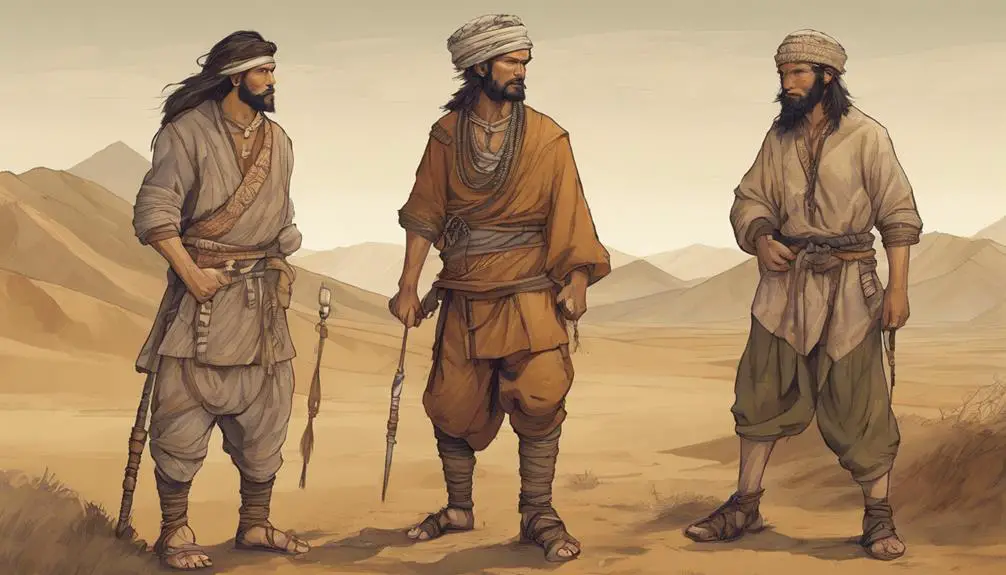
In the early days of civilization, around 3,000-3,300 BC, trousers made their first appearance in western China, crafted from wool and featuring straight legs with a wide crotch design. These garments emerged primarily due to the practical needs of ancient societies, particularly those involved in horseback riding.
As you explore the origins of trousers, you'll find that they provided essential protection and flexibility for riders in Central Asian cultures, allowing for greater mobility during travel and work.
Interestingly, the term "trousers" can be traced back to the sixth century BC when Greek geographers noted their use among Persian horse riders. These early trousers were loose-fitting and made from natural fibers, prioritizing functionality over fashion.
Women, too, began wearing trousers in various cultures, reflecting a shift in garment practicality that catered to their active lifestyles.
Archaeological findings, such as those from the Yanghai cemetery, reveal the rich history surrounding trousers. The design and acceptance of trousers evolved through time, often met with disdain from ancient Greeks and Romans, who favored tunics and robes.
Ultimately, trousers symbolize a fascinating journey through human innovation and adaptation.
Historical Evolution
Throughout history, trousers have undergone remarkable transformations, adapting to the needs and values of different societies. Trousers dating back to the 13th-10th centuries BC were primarily developed in Central Asia for horseback riding, highlighting their practical origins.
However, in ancient Greece and Rome, these garments faced cultural resistance, deemed barbaric compared to the elegant tunics and robes of the time. By the 1960s, trousers began reflecting cultural shifts and rebellion, with styles like bell-bottoms symbolizing counterculture and military cargo pants influenced by the Vietnam War.
Fast forward to the 19th century, and trousers evolved from their military and labor roots into a common form of lower-body fashion, with looser styles emerging and denim jeans taking center stage. This period marked a significant shift in the history of trousers, as they began to signify more than just utility.
As societal norms gradually changed, women started wearing trousers, especially during World War II when they filled roles in factories. By the 1970s, trousers gained broader acceptance, symbolizing gender equality and women's rights.
The early modern evolution of trousers reflects a dynamic interplay between function and fashion, showcasing their journey from a male-dominated garment to a staple of contemporary wardrobes, embodying versatility and empowerment for all.
Cultural Shifts in Fashion
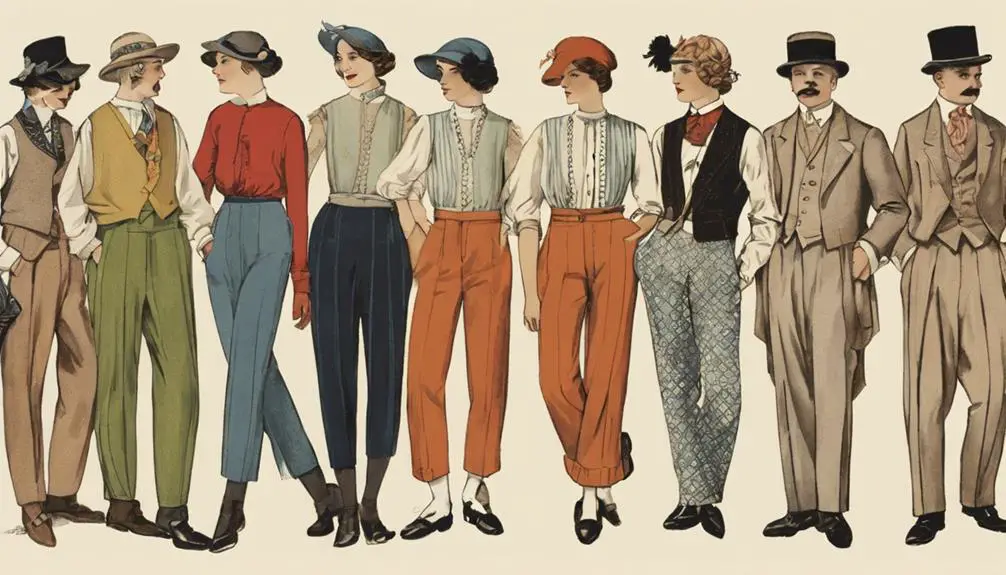
Trousers have dramatically reshaped fashion and cultural identity over the years, reflecting deeper societal changes. They evolved from being a strictly masculine garment in the 19th century to a powerful symbol of women's liberation and empowerment, especially during and after World War II. As women stepped into factories, trousers became essential for their work.
The 1960s marked a significant cultural shift, with trousers gaining popularity among women. Significantly, Charlotte Reid's choice to wear trousers in Congress in 1969 challenged long-standing gender norms in professional attire, paving the way for future generations. This transformation in women's clothing parallels the evolution of various fashion brands, including Ralph Lauren, which has also adapted to cultural shifts over time, demonstrating the broader impact of clothing on societal perceptions and identity.
vintage Ralph Lauren identifiers showcase how fashion can reflect larger movements and changes in culture. This era also saw the emergence of the pantsuit, a bold declaration showcasing women's presence in the workforce and political arenas.
Trousers not only represented fashion trends but also embodied social movements advocating for rights and equality. For instance, Malawi's 1994 decision to lift the ban on women's trousers symbolized a shift toward greater freedoms for women, demonstrating how clothing can reflect larger societal changes.
Today, as trousers continue to evolve, they remain a powerful indicator of the ongoing fight for empowerment, reshaping our understanding of gender norms and influencing cultural identity around the globe.
Legal Developments
Legal developments over the past few decades have greatly shaped the landscape of women's fashion, particularly regarding trousers. In 1993, the U.S. Senate made a historic move by allowing women to wear trousers in formal settings, marking a pivotal shift in acceptance of women's fashion choices.
This change resonated globally; in 1994, Malawi lifted its ban on women's trousers, which had once criminalized the garment, showcasing evolving attitudes toward women's clothing rights.
Italy's 1998 Supreme Court ruling concerning tight jeans and consent sparked significant feminist protests, highlighting the intersection of fashion and legal interpretations of women's rights.
Meanwhile, Turkey abolished a ban on women lawmakers wearing trousers in 2013, further reflecting changing societal norms around gender and professional attire.
In California, the Government Code Section 12947.5 offers protection against gender-based dress discrimination, emphasizing the ongoing efforts to safeguard rights for trousers for women.
These legal strides not only empower women but also celebrate their right to express themselves through diverse fashion choices, reinforcing the notion that clothing should never be a barrier to equality.
Contemporary Trends
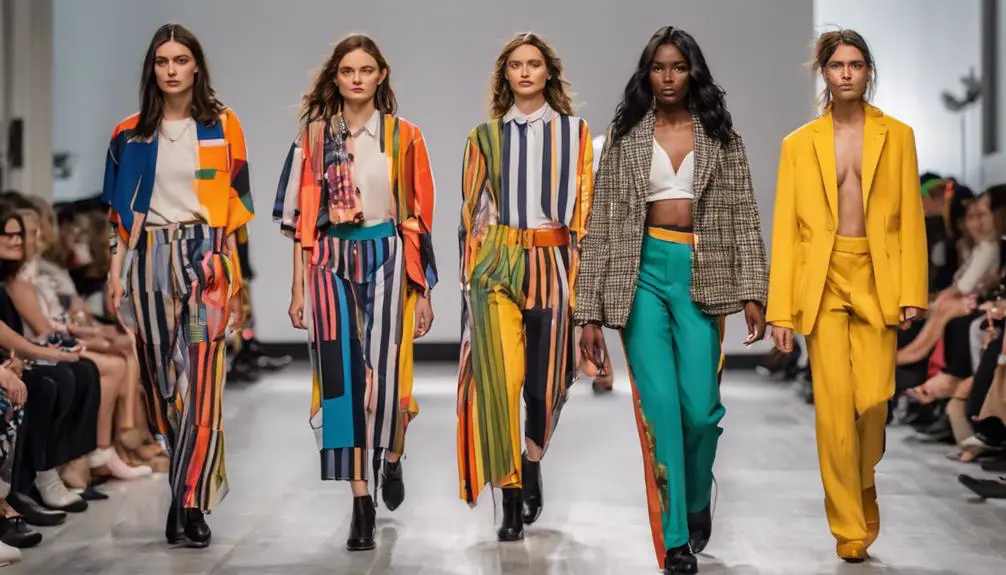
Fashion today offers a vibrant array of trouser styles that cater to every personality and lifestyle. Contemporary trousers come in various cuts, including skinny, wide-leg, cargo, and palazzo, ensuring you can find the perfect fit for your unique body type.
With the rise of athleisure, comfortable trouser styles like joggers and sweatpants have become staples for casual wear and active lifestyles, combining practicality with laid-back elegance. Additionally, the evolution of trousers includes styles like chinos and khakis, which offer distinct fits and fabric options for different occasions, reflecting the difference between chinos and khakis in modern fashion.
Sustainable fashion trends are also shaping trousers today, as many brands embrace eco-friendly materials and practices, addressing your concerns about environmental impact. You'll find trousers designed with multifunctional features, such as moisture-wicking fabrics and built-in stretch, enhancing comfort without sacrificing style.
Moreover, the influence of streetwear and high-fashion collaborations has birthed innovative designs that blend casual aesthetics with luxury elements, making these trousers highly desirable.
Denim jeans continue to hold their ground, evolving with trendy cuts and sustainable practices, ensuring they remain a wardrobe essential. In this dynamic landscape, contemporary trousers not only reflect your style but also align with your values, making fashion a thrilling journey of self-expression.
Frequently Asked Questions
What Is the Origin of the Trouser?
Imagine ancient warriors strutting in fabric innovations, defying gender norms. As tailoring techniques evolved, trousers became symbols of power and practicality. From historical materials to modern adaptations, their cultural significance and fashion trends reflect global variations.
What Is the Difference Between Pants and Trousers?
When you consider pants and trousers, you'll see pants fit casual styles, while trouser styles lean towards formal. Fabric choices reflect fashion evolution, showcasing global terminology and cultural significance in modern adaptations and workwear trends.
What Is the History of the Trouser Role?
You'll find trouser evolution reflects cultural significance, showcasing fashion trends and gender representation. Historical usage varies across global styles, while material variations and tailoring techniques have shaped contemporary perceptions, influencing societal norms and attitudes toward garments today.
Why Is It Called a Pair of Trousers?
You call it a pair of trousers because fashion evolution emphasizes the dual legs in design. This reflects cultural significance, historical variations, and gender differences, showcasing tailoring techniques and regional styles in iconic designs and modern adaptations.
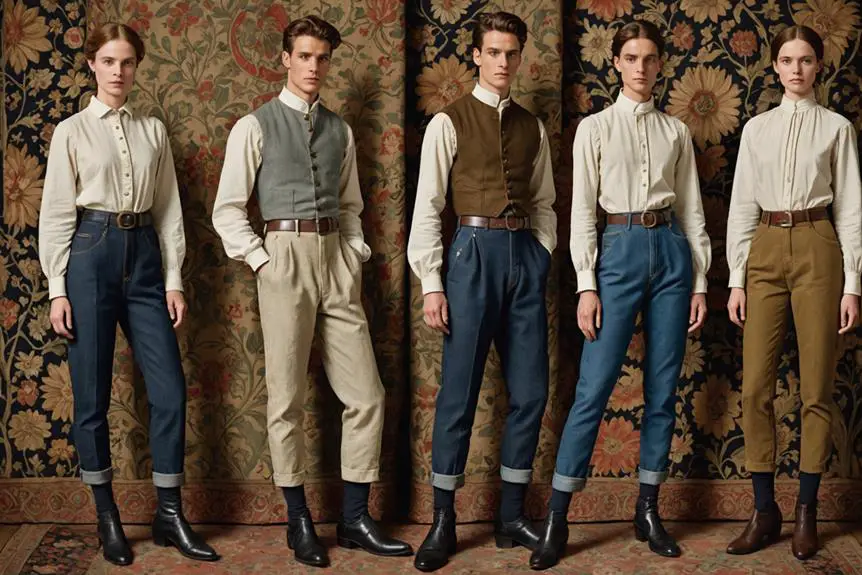

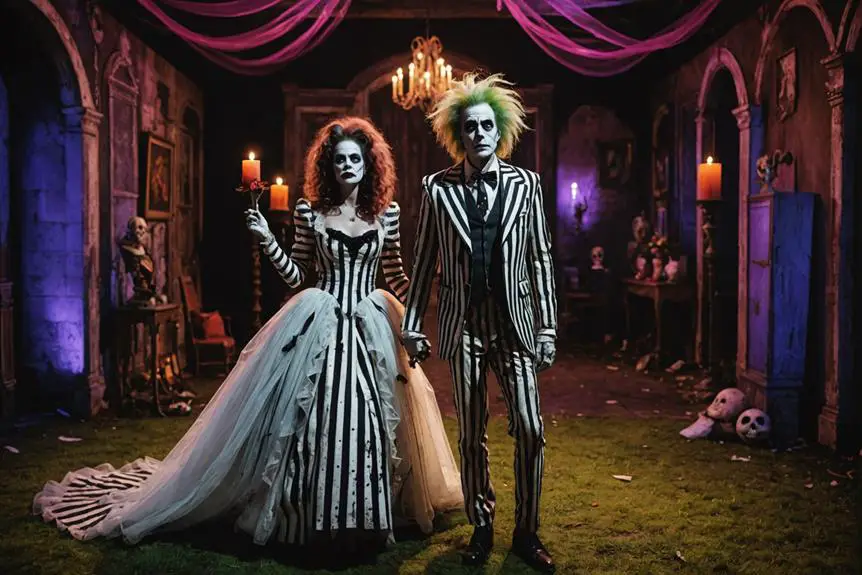
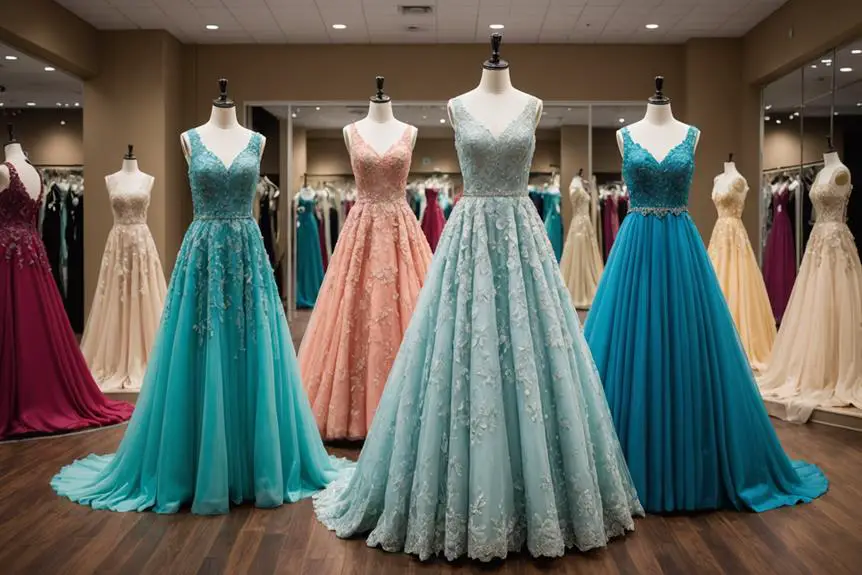
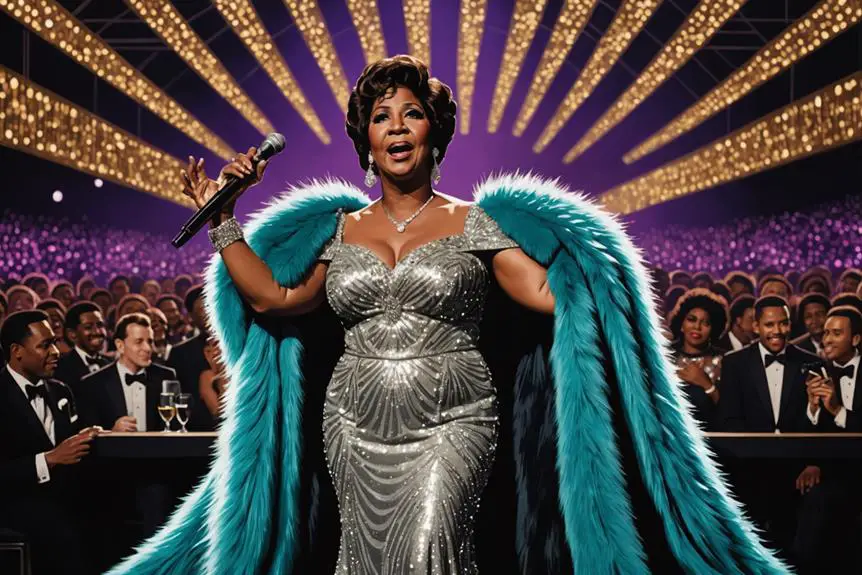
Hi there! I just would like to give an enormous thumbs up for the great information you have right here on this post. I will be coming back to your weblog for extra soon.